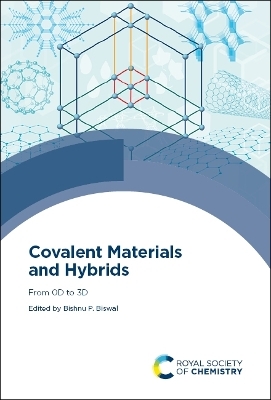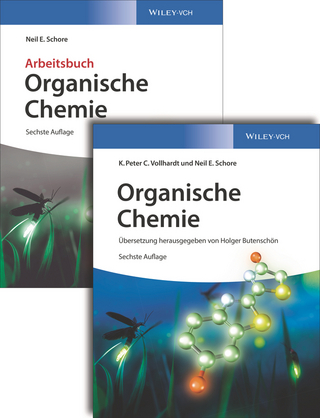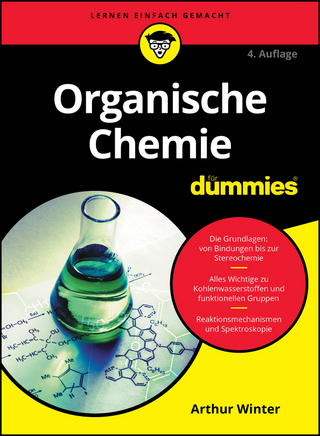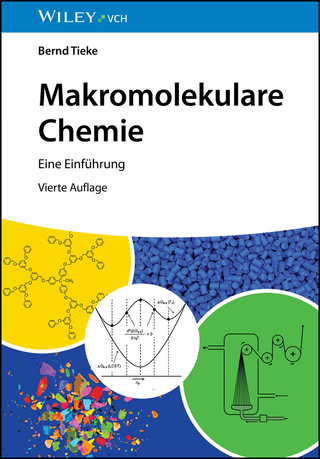
Covalent Materials and Hybrids
From 0D to 3D
Seiten
2023
Royal Society of Chemistry (Verlag)
978-1-83916-717-1 (ISBN)
Royal Society of Chemistry (Verlag)
978-1-83916-717-1 (ISBN)
Readers will take a journey on how covalently bonded materials and their hybrids can change the material world through applications relevant to energy, water and the environment.
Moving through the historical evolution of traditional amorphous 1D organic polymers to crystalline 3D networks, through 0D molecular cages and 2D frameworks, this book takes the reader on a journey on how covalently bonded materials and their hybrids can change the material world through applications relevant to energy, water and the environment. Looking at future demands from the materials that we use, strong, heavy and thermodynamically stable metals have been independently taken over by carbon allotropes and analogous materials. Equipment and instruments are becoming smaller and lighter, with research driving towards future organic materials with advanced physical, chemical, mechanical and optoelectronic properties. This book classifies and touches on every aspect of polymeric material chemistry, advanced characterizations and emerging reticular chemistry, especially organic porous materials, their design, synthesis, structure and built-in functions. The design, synthesis, structure, characterization, and properties of carbon rich framework materials are systematically reviewed to provide key information of the entire field. Arranged in chronological order to show changes made in ideas and strategies in developing these covalently framed materials to meet modern requirements, chapters cover linear polymers, organic cages, fullerene, carbon nanotubes, graphene and graphite, porous organic polymers, 2D- and 3D-covalent organic frameworks, and their hybrids. This book is an ideal introduction for students wanting to pursue this emerging field and gain knowledge on polymers and advanced organic materials. It will also update current researchers on recent developments, explored properties, and arising challenges of covalent materials.
Moving through the historical evolution of traditional amorphous 1D organic polymers to crystalline 3D networks, through 0D molecular cages and 2D frameworks, this book takes the reader on a journey on how covalently bonded materials and their hybrids can change the material world through applications relevant to energy, water and the environment. Looking at future demands from the materials that we use, strong, heavy and thermodynamically stable metals have been independently taken over by carbon allotropes and analogous materials. Equipment and instruments are becoming smaller and lighter, with research driving towards future organic materials with advanced physical, chemical, mechanical and optoelectronic properties. This book classifies and touches on every aspect of polymeric material chemistry, advanced characterizations and emerging reticular chemistry, especially organic porous materials, their design, synthesis, structure and built-in functions. The design, synthesis, structure, characterization, and properties of carbon rich framework materials are systematically reviewed to provide key information of the entire field. Arranged in chronological order to show changes made in ideas and strategies in developing these covalently framed materials to meet modern requirements, chapters cover linear polymers, organic cages, fullerene, carbon nanotubes, graphene and graphite, porous organic polymers, 2D- and 3D-covalent organic frameworks, and their hybrids. This book is an ideal introduction for students wanting to pursue this emerging field and gain knowledge on polymers and advanced organic materials. It will also update current researchers on recent developments, explored properties, and arising challenges of covalent materials.
Polymer Chemistry: An Overview;0D Covalent Organic Cages: Design, Synthesis, and Applications;Graphene, Its Family and Potential Applications;Conjugated Porous Polymers and Hybrids;2D Covalent Organic Frameworks;3D Covalent Organic Frameworks;Carbon–Carbon Linked Covalent Organic Frameworks;Structural Characterization of Porous Organic Materials;Covalent Organic Framework-based Hybrid Materials and Their Applications;Computational Insights of Dimensional Organic Materials
| Erscheinungsdatum | 28.07.2023 |
|---|---|
| Verlagsort | Cambridge |
| Sprache | englisch |
| Maße | 156 x 234 mm |
| Gewicht | 1952 g |
| Themenwelt | Naturwissenschaften ► Chemie ► Organische Chemie |
| Technik ► Maschinenbau | |
| ISBN-10 | 1-83916-717-3 / 1839167173 |
| ISBN-13 | 978-1-83916-717-1 / 9781839167171 |
| Zustand | Neuware |
| Informationen gemäß Produktsicherheitsverordnung (GPSR) | |
| Haben Sie eine Frage zum Produkt? |
Mehr entdecken
aus dem Bereich
aus dem Bereich


